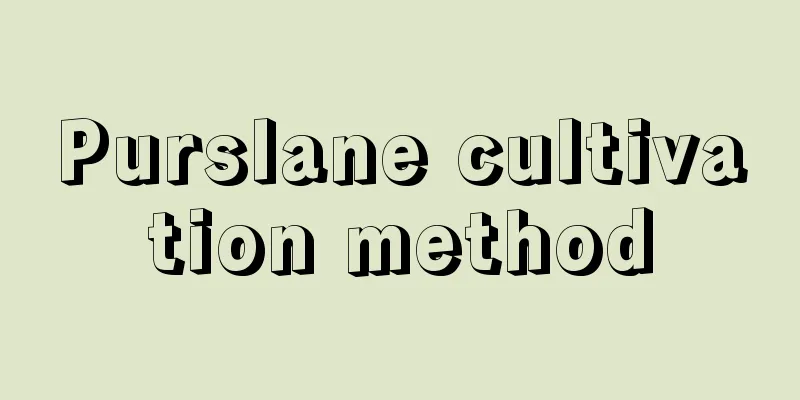Purslane cultivation method

1. Maintenance methods1. Temperature: It has strong adaptability, but it grows relatively more vigorously in warm places. Generally speaking it is around fifteen to twenty-eight degrees. However, both its cold resistance and heat resistance are relatively good, so generally no special adjustment is required. 2. Light: Purslane does not require much sunlight and can grow better under weak light conditions. In addition, it is generally not harmed by strong light because it is also relatively resistant to strong light. Can be placed in a semi-shaded place. 3. Watering: Similarly, Purslane is highly adaptable to water because it is a type of plant that is both very drought-resistant and very water-resistant. Generally speaking, there will be no harm as long as you don't stop watering for a long time. You can keep the soil in a semi-moist state. 4. Fertilization: Purslane does not require much fertilizer. As long as you choose good quality soil with relatively high nutrients, you basically do not need to apply fertilizer afterwards. 2. Breeding techniques1. Reproduction: A common method is sowing. Choose good seeds and then choose a location for sowing. Since its seeds are relatively small, you can first mix them into fine sand and then sprinkle them evenly in the ditch. After spreading them, just cover them with a small amount of soil. After sowing, keep the temperature suitable so that the seeds can germinate in two to four days. 2. Pruning: Purslane grows very vigorously, and sometimes the leaves appear messy. They can be slightly trimmed, but not too much. More importantly, for Purslane planted on a large scale, once a disease is discovered, it is best to remove the diseased plants in a timely manner, otherwise it will easily expand the affected area. 3. Problem diagnosis and treatment1. Diseases: Generally speaking, Purslane does not have too many diseases. They are relatively more common in summer, including "anthracnose" and so on. The diseased plants can be cut off directly, and it is best to use some pesticides. 2. Pests: There are not too many pests. When they appear, you can spray some pesticides against them in time, which will be more effective. IV. Other issues1. Toxicity: It is not toxic in itself and therefore will not cause any harm. 2. Can it be grown at home? Generally speaking, no, because it is not an ornamental plant. |
<<: How to cultivate Green King
>>: How to grow the hairy tamarisk
Recommend
Yuyuantan Cherry Blossom Festival
1. Time The Yuyuantan Cherry Blossom Festival sta...
Can hydrangeas be exposed to the sun? What should I do if they wilt in the sun?
Can hydrangeas grow in the sun? Hydrangeas can be...
Can Fuchsia be grown in the bedroom?
1. Is it possible? Fuchsia is not suitable for gr...
Why are the leaves of Catharanthus roseus turning yellow?
1. Proper watering Reason: The yellowing of Catha...
How long is the growth cycle of tea leaves?
Introduction to Tea Growth The terrain for tea tr...
How to grow eggplant on the balcony
Planting season: Eggplant is usually planted from...
Can Caladium be hydroponically cultivated?
Caladium can be hydroponically cultivated Caladiu...
The difference between purple peony and dahlia
1. Leaf Difference The leaves of purple peony are...
What kind of fertilizer is good for fruit tree base fertilizer (base fertilizer application method)
The role of base fertilizer for fruit trees When ...
Where is the best place to plant azalea? Is it good to plant it at home?
Azalea planting area Rhododendrons are planted in...
Lavender flowering period, the benefits of lavender
1. Flowering period Generally speaking, its flowe...
Ginger planting conditions and climate conditions
Ginger Introduction Ginger is the rhizome of the ...
The breeding methods and precautions of tiger tongue red
Tiger tongue red is a very easy plant to grow. Th...
The difference between white crystal chrysanthemum and button chrysanthemum
The difference between white crystal chrysanthemu...
Does the family need soil to grow lotus?
1. It is best to use soil It is best to use soil ...









